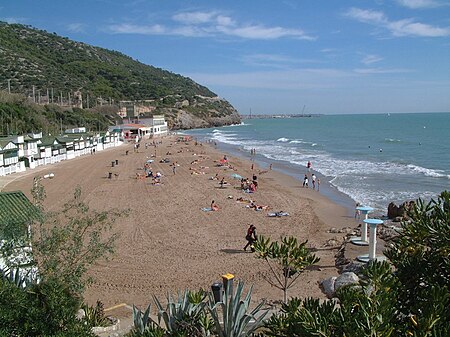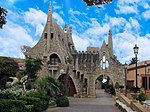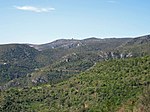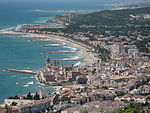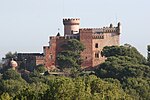Sitges (Old Catalan for 'underground [grain] silos'; Catalan pronunciation: [ˈsidʒəs], Spanish: [ˈsitʃas]) is a town about 35 kilometres southwest of Barcelona, in Catalonia, Spain, renowned worldwide for its Film Festival, Carnival, and LGBT Culture. Located between the Garraf Massif and the Mediterranean Sea, it is known for its beaches, nightspots, and historical sites.
While the roots of Sitges' artistic reputation date back to the late 19th century, when painter Santiago Rusiñol took up residence there during the summer, the town became a centre for the 1960s counterculture in mainland Spain during the Francoist regime, and became known as "Ibiza in miniature".
Today, the economy of Sitges is based on tourism and culture, offering more than 4,500 hotel beds, half of them in four-star hotels.Sitges is a gay-friendly destination with many establishments catering for the LGBT community and popular gay beaches.
Almost 35% of the approximately 26,000 permanent inhabitants are from the Netherlands, the UK, France, and Scandinavia, whose children attend international schools in the area. There are 17 beaches. Sitges was also the site of the annual Bilderberg conference held in June 2010.
Sitges has been referred to as the Saint-Tropez of Spain, with property prices approaching those of the most expensive European cities, the main reason for this being the setting by the sea and the surrounding Garraf Park. Proximity to Barcelona-El Prat Airport is also a major advantage.
